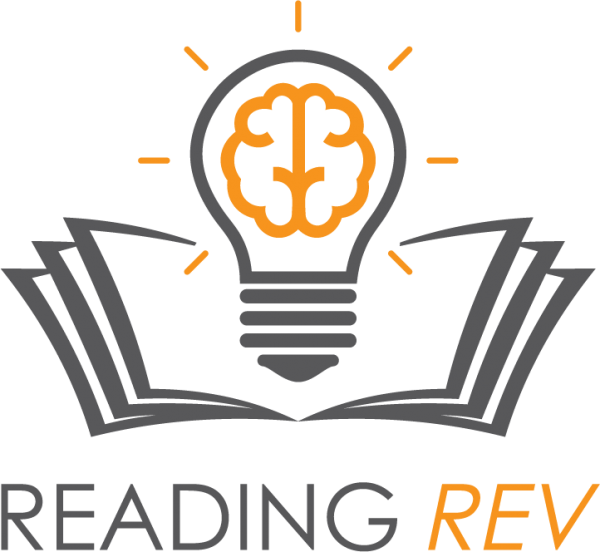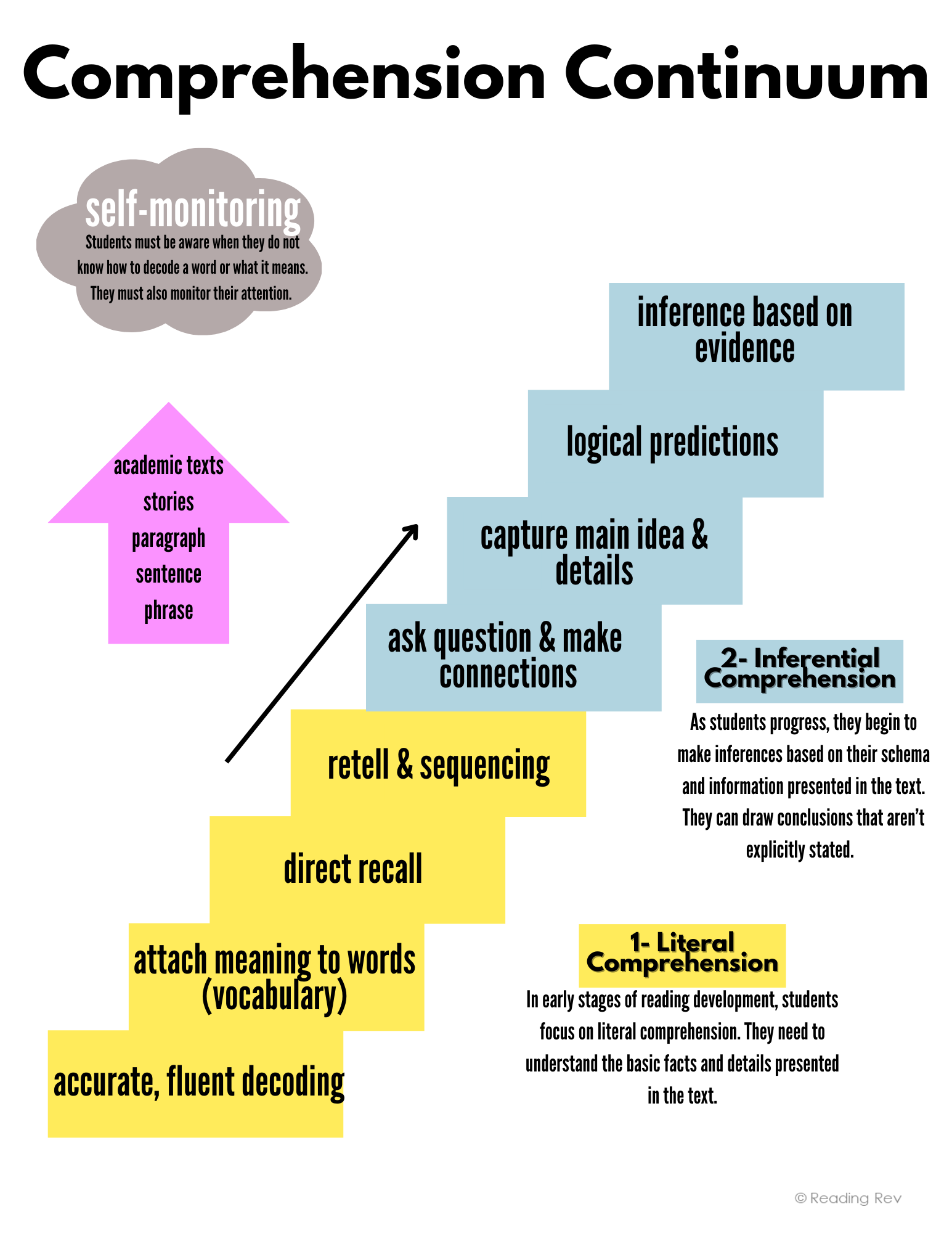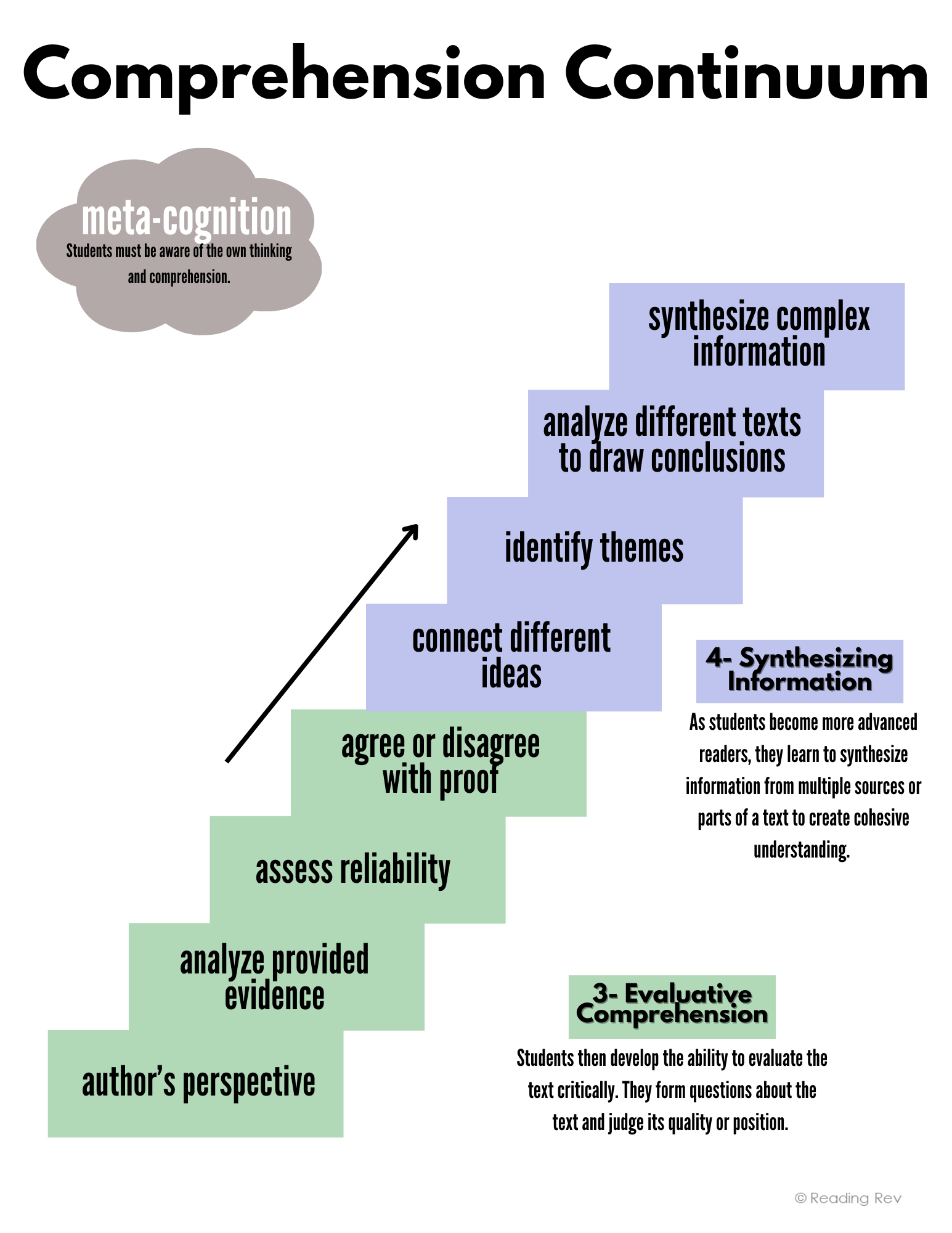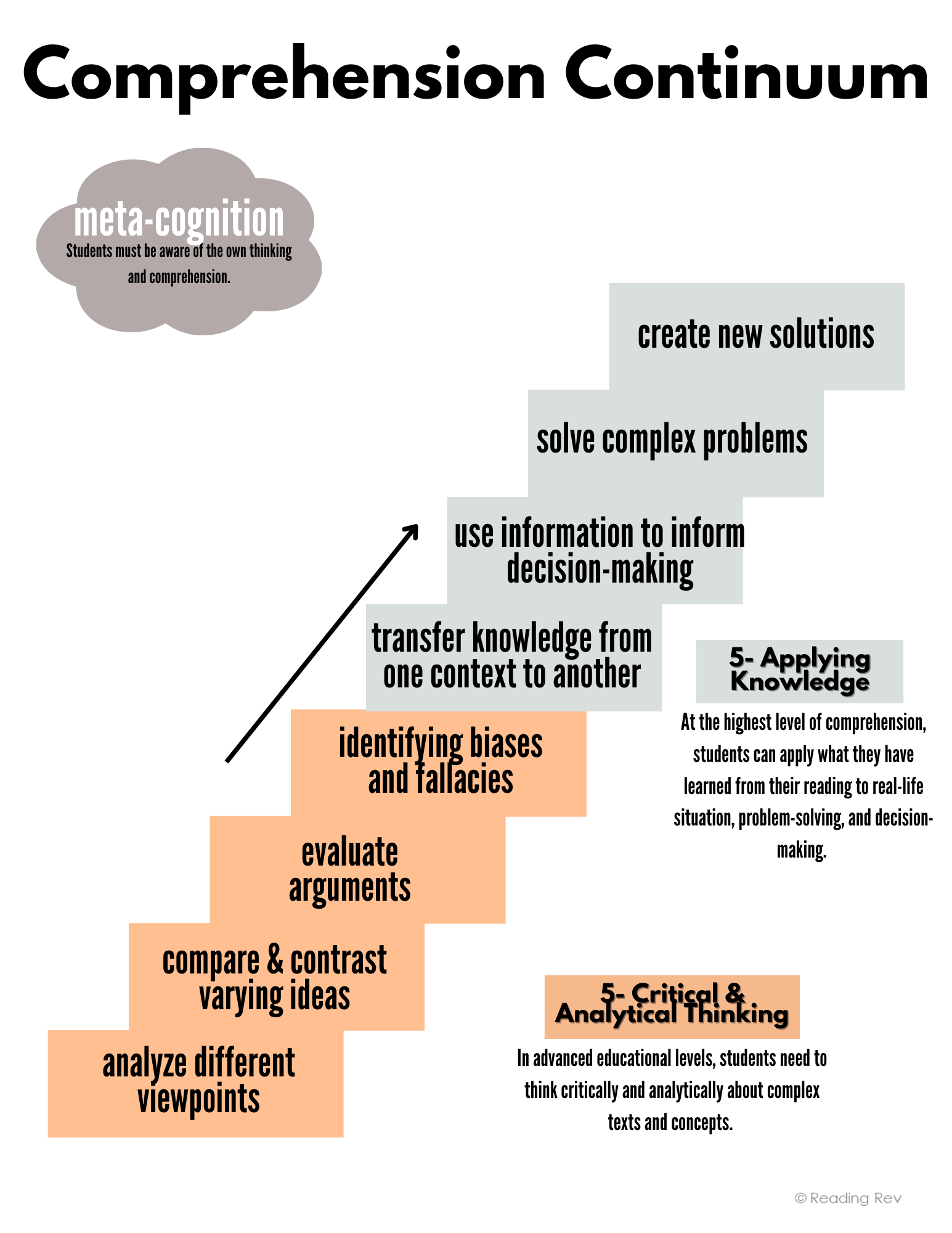Rethinking Comprehension
Comprehension is the final of the 5 components of reading. It is at the top of the reading pyramid, and is the ultimate goal of all the other components: creating meaning is what reading is all about. If one of the other components breaks down, comprehension almost inevitably suffers.
However, it is critical that we do not ignore this component of reading until all the others fall neatly into place. Comprehension should be modeled, discussed, and taught long before our children are capable, independent readers.
Metacognition is thinking about your thinking. Some students naturally learn how to think about what they hear and read. Others do not.
The key to comprehension is metacognition. Without it, the information goes in one ear and out the other. It doesn’t matter if you are listening or reading; if you do not interact with the information in some capacity, it will not stick. This happens when you meet someone, but do not remember their name 3 minutes later. You did not think about it or attach meaning to it. It happens when you read a page to the end and realize that although you read the words, you have no idea what it was about. No metacognition took place; therefore, you did not comprehend.
Some students naturally learn how to think about what they hear and read. Others do not. That is where great teaching comes in. We can teach metacognition by modeling what it looks like when we do it. This is often called “think aloud.” We can also give kids concrete examples of abstract comprehension strategies. Our favorite book regarding this is Comprehension Connections: Bridges to Strategic Reading by Tanny McGregor.
Two other important factors of language comprehension are vocabulary and background knowledge. Children who are learning English as a second language, or kids coming from environments lacking rich, oral language interactions, often need support in comprehension. This makes perfect sense. Without knowing the meaning of the majority of individual words, understanding the meaning of the passage is difficult. Robust vocabulary instruction can help.
Also, children lacking experiences or background knowledge are at a great disadvantage. They may struggle to visualize what is read because they have never experienced anything like it. Reading about a nature preserve is much easier for a student who has visited one than the student who has never heard of this concept before. We can boost comprehension by giving our students background knowledge prior to reading. Showing pictures, videos, or telling stories are all adequate ways to do this.
There are several ways parents and teachers model and teach language comprehension. You can read about each in more detail here:
1- Building Background Knowledge
2- Vocabulary
3- Syntax and Sentence Structure
Comprehension Skills Continuums
Just like other reading skills, comprehension skills fall on a continuum from simple to advanced. Therefore, we can provide explicit comprehension instruction using these continuums almost like a scope and sequence. Students need to have the basic skills of level one and two before they can navigate the more abstract skills of level 5 and 6.
Teachers can begin by looking at their grade level standards. What are the reading and language comprehension skills appropriate for your grade level? What kinds of questions and tasks do your students need to be able to perform and navigate to demonstrate proficiency? What assessments are available to measure comprehension? If you have students who are behind, how do you remediate missing skills to catch them up?
By spending time asking and researching these questions, you can ensure that you are providing your intermediate students with not only literal comprehension, but the ability to infer, evaluate, synthesize, critic, and apply information. You can read more about systematically teaching higher-level comprehension here. You can find these continuums and a video demo modeling how this looks with authentic texts in Reading Rev’s VIP site!
Teach content over comprehension strategies and skills.
Finally, we want our focus to always be on teaching authentic content. We do not want to teach a “skill of the week.” These comprehension skills are what good readers naturally do! We want to point them out, name them, and model them. However, we want to teach real knowledge! We want our students exposed to literature, history, and science that will enrich their lives! We want to be purposeful about ensuring that our children are culturally literate and knowledgeable about the world. Teaching them how to understand that real knowledge through the use of skills is acceptable. Just teaching them how to find the main idea or make predictions and inferences out of context is not. Our favorite book that details this shift is Natalie Wixler’s The Knowledge Gap- The Hidden Cause of America’s Education System- and How to Fix It.
Comprehension is one of the most complicated facets of teaching and education. Effective instruction requires us to be able to determine the root of the problem. Let’s keep exploring this pillar of reading together!






